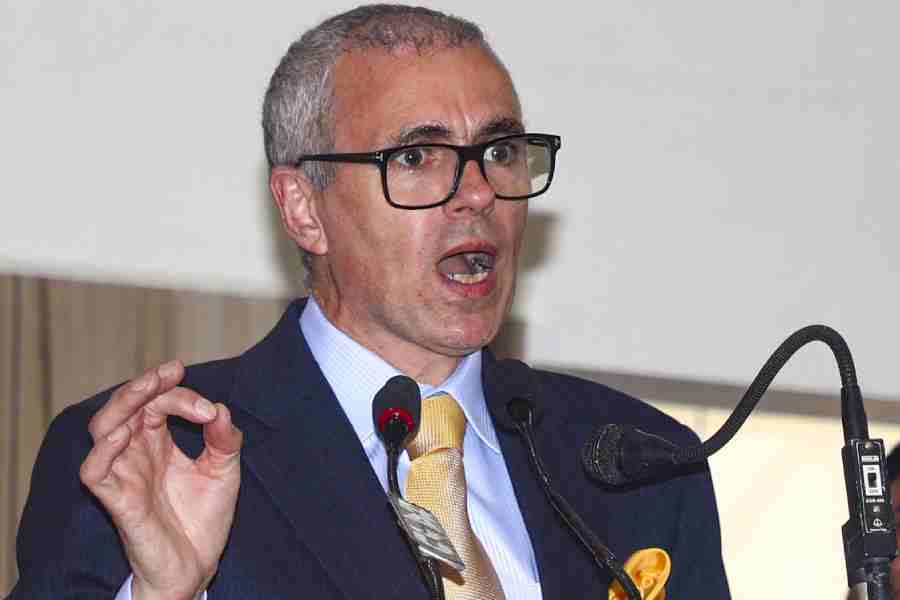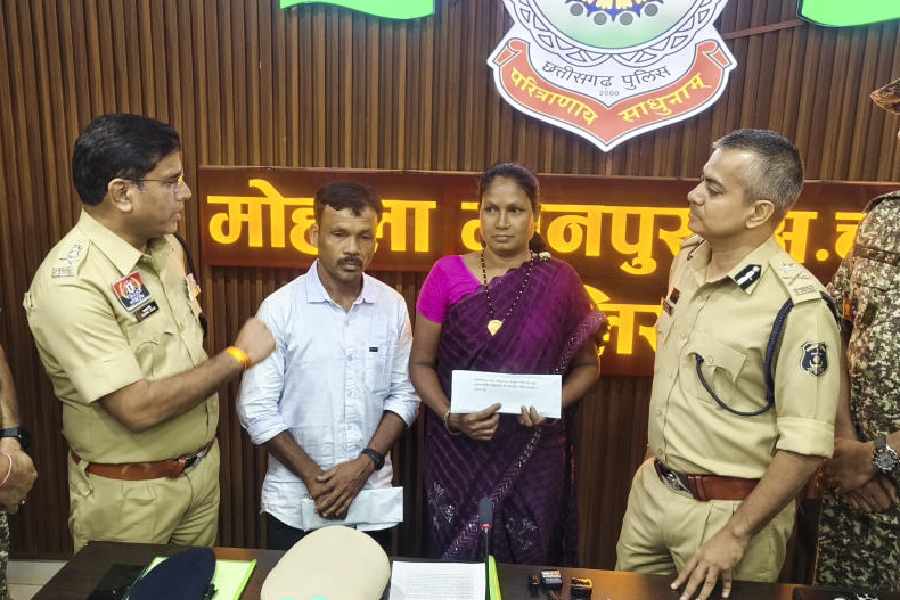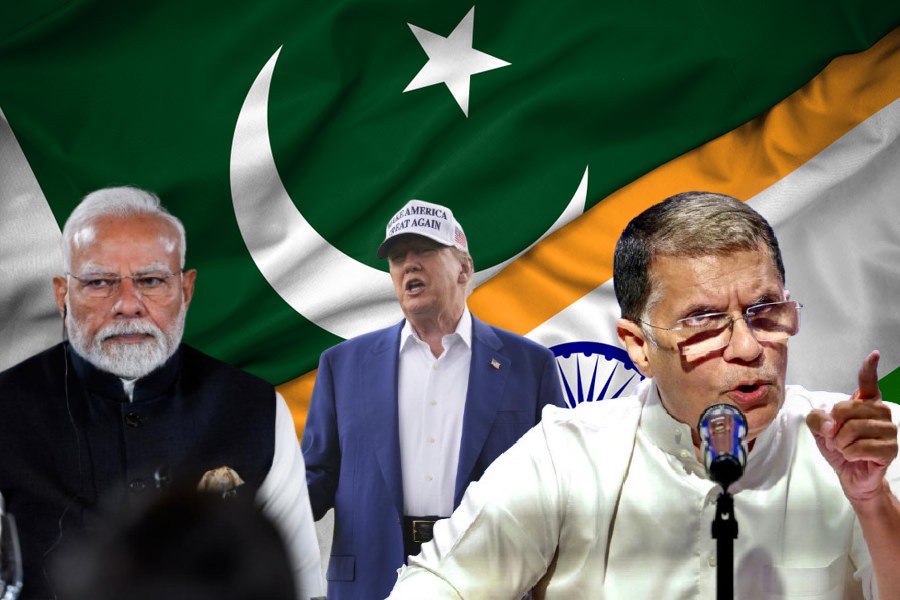.jpg)
As Calcutta swelters in heat and humidity, it is raining every two-three days in a corner of Purulia, a district traditionally parched of rain. “It feels as if we are in Darjeeling there,” says Kamal Chakraborty, who is credited with harvesting an entire forest on arid wasteland in Bandwan block, on the Bengal-Jharkhand border.
In Salt Lake to be felicitated by the Pollution Control Board on world environment day, the septuagenarian Chakraborty was overcome by the heat in the city. “This is what you get as prize for rampant deforestation in the name of development!”
Chakraborty is an author who started off the project in 1996 with fellow members of Kaurab, a little magazine published from Jamshedpur since the 70s. They pooled in their savings and bought 15 acres. "The land we got was rocky and uncultivable. At first we would plant trees at random - Kamranga, Sonajhuri, sel.... We would water them with care and still they would die." Chakraborty was then working with Telco in Jamshedpur and would ride around 65km by motorbike to reach the patch of land in the weekends.
Around 4-5 years later, owners of the adjacent plots begged them to buy more land. “They had no use for it. And we weren't still sure if the trees would make it. Vacant land looks even bigger and endless. Still, bolstered by faith, we bought another 15 acres.”
He had made a name by then as a poet. “Kaurab had been praised by Sunil Ganguly in an article in Desh in 1982 as the best Bengali literary magazine to come out outside of Bengal.”
People ridiculed him saying he was aping Rabindranath (“Rabindranath Rabindranath khelchhe”), trying to build his own Santiniketan. “Possibly the comparison came to them because I also have a long white beard,” he chuckles.

Chakraborty has no explanation for how the greenery survived in the barren wilderness. “I say it is all the will of Brikshanath, the only god I believe in.”
Birds — 64 species of them, including rare ones like Paradise Fly Catcher — started flocking. “They would eat fruits and drop the seeds. The earth nurtured them and sprouted saplings. The ground got overgrown with a carpet of weeds and shrubs — bontulsi, chorkanta… I did not know the names of most. The leaves rotted and compost was formed which got incorporated into the soil by the activities of worms.”
Now the forest has over 10 lakh trees. “We planted the first three-four lakh. The birds and the rain took care of the rest,” he smiles.
He has started rain water harvesting by digging waterbodies. The undergrowth in the forest also aids water retention. “Earlier the ground water level was 150ft deep. Now water can be found at 15-20 ft. The then district magistrate Tanmoy Chakraborty came for a visit last winter and was amazed at what we had achieved.”
Only one plant has proved unwelcome. “I loved seeing catkins (kashphool) sway in the breeze and let them grow to heights of seven-eight feet.” But with roots reaching 1-1.5ft deep into the soil, they threatened Bhalopahar Society’s paddy cultivation plans. “People told us to use acid to kill them. But I can never do that to greenery. So I used plough to tear off the roots.”
Nor does he believe in using pesticides. “Instead, I soak tobacco leaves and use the water or cow urine diluted in water. The only plants that need pesticides are the seasonal flowers like dahlia, dianthus, rose, petunia and chrysanthemum. The local ones like Bakul, Kadamba, Gandharaj or Simul do not need any.”
.jpg)
.jpg)
Other than 22 types of paddy, including the rather rare black rice, he grows various kinds of vegetables like cauliflower, cabbage and onion as also strawberry and raspberry.
In 2004, the Bhalopahar Society set up a school for the local tribal children. The area is inhabited by Santhals, Sabars and Mundas. “We have about 170 students. About 20 stay in our hostel. We cannot afford to keep more. The rest come for day boarding. We are now affiliated to the West Bengal Board of Secondary Education.” To develop an affinity for the forest in them, he gets the children to take the water they clean their lunch plates with to the trees. “They have learnt to identify the trees too.” The school was awarded the School That Cares trophy at The Telegraph School Awards in 2008.
The going has not been smooth even after the forest started prospering. A couple of times, fire was set to it. “The children spotted the flames in time and we put it out with a lot of effort.” He believes it to be the work of poor villagers looking for firewood. “The poverty in the area is unimaginable. Women have single saris which they wait for to dry after washing in the river.”
Still he believes the forest survives because it is in the fringe areas. “Yes, sometimes villagers hack Sonajhuri trees but I do not mind that so much as long as the sal, teak and mahogany are not touched. Sonajhuri wood does not rot or catch termite easily. So the villagers use it as joist.” Twice he had sold Sonajhuri wood himself, to raise funds for the school building and to dig the ponds to store rainwater. “The tree develops cracks after 15-20 years. It also grows easily.”
His orchard stays largely untouched. “My mango trees are bowing under the weight of fruits. The forest also has ample lychee, jackfruit, lemon and kamranga which feed the students and residents.”
There is a lot to do on the campus other than tending to the trees and teaching and feeding the children. “We have 44 cows and over 100 hens.” He has able assistants in Jayati Chakraborty, Kanchan Dey, Sankar Chakraborty, Animesh Bandyopadhyay, Sekhar Basu Mallik, Debu Roy, Barin Ghoshal, Mitra Chatterjee, Dhurjati Chatterjee and Purnendu Mitra, some of whom visit from time to time to help out.

Lend me thy land
He would love to expand his work to adjacent land. “I do not seek ownership. Just give me the land. I will give you back greenery," he says. There was abundant vegetation in an adjacent government-owned land. “But the trees were hacked and stolen in public view, first at night then at daytime. No one protested!” He has now cut a trench to demarcate his forest from the government land to stave off the woodcutters. He cannot buy more land as the society has reached the maximum area permitted for single ownership by the land ceiling act. “Otherwise we would have bought the nearby hillocks and turned them green,” he rues.
From Calcutta, he took back a Naglingam, a Tabebuia and two other flower saplings that were gifted by a college where he addressed the students. But the trip left him sad, not just for the soaring temperature but due to news of cancer afflicting so many of his acquaintances. “Come back to nature. How much longer will you eat, drink and breathe poison?” is his appeal to citizens.
What is your message for Kamal Chakraborty?
Write to The Telegraph Salt Lake, 6 Prafulla Sarkar Street,
Calcutta 700001 or email to saltlake@abpmail.com

.jpg)








